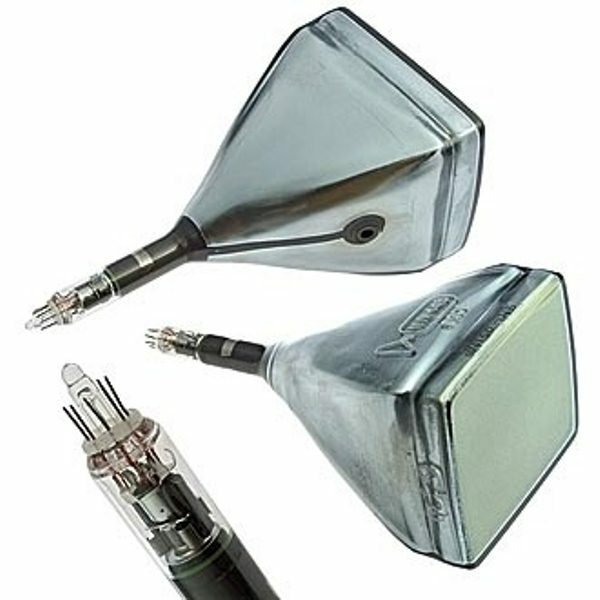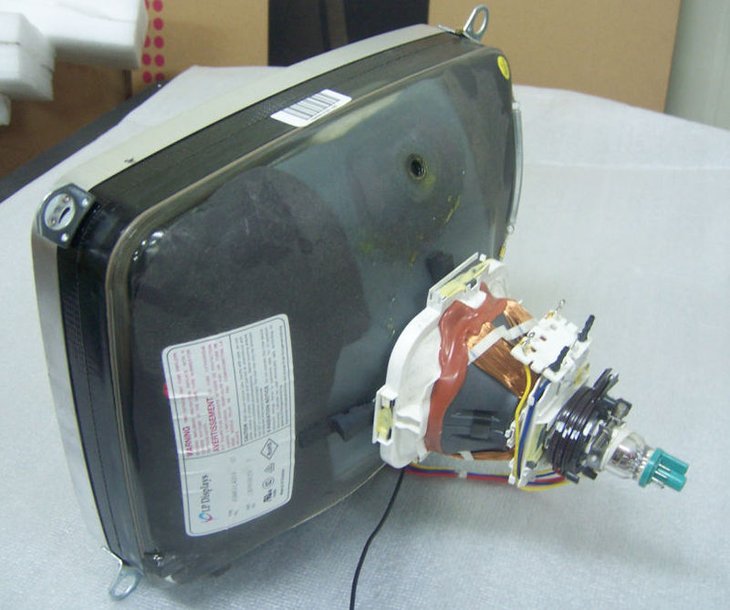



#Cathode ray tube tv tv
A beautiful picture, way crisper than anything I ever could get using a modulator! I ran an extension cable from the tuner through the vent holes to outside the TV and another from the mainboard and connected them to an external input switch. I unplugged that coax from the mainboard and plugged a jumper leading to my old Atari in it’s place. I had no way to actually measure the signal on that wire but I decided to just be brave and go for it. the tuner connected to the mainboard of the TV by a skinny piece of coax with a plain old RCA phono jack just like a typical composite input. That made since since to tune UHF one would turn the VHF dial to a position marked UHF.Īnyway. Well, actually 2 boxes, one VHF, one UHF but the VHF was obviously the master with the UHF one feeding into it. I found that the tuner was it’s own discreet unit sealed in it’s own metal box. I was never quite satisfied with the video quality. They would usually last 6 months to a year, then either die or I would find a better one. When I was a kid in the early 90s I used to buy old TVs from about that era in garage sales. Posted in Radio Hacks, Retrocomputing Tagged cathode ray tube, chromecast, retro, rf signal, television Post navigation Needless to say, they don’t work the other way around, although since there are still televisions that only pick up RF broadcasts, coaxial to HDMI adapters do exist. HDMI-to-RF adapters are pretty easy to pick up at a hardware store, and they allow you to project videos onto specific channels on a CRT. You can see some of the trippy graphics in the video below – the video samples shown fit the retro aesthetic, but I’m sure there’s video combinations that would seem pretty out of place. What did next was to plug in a Chromcast and essentially convert the CRT into an old-school monitor. However, HDMI-to-RF transmitters do exist, making it possible to convert HDMI signals to RF or coaxial cable output to replace an antenna signal. The CRT dates back to 1977 and uses just RF input, making it useless as a modern television set since most TV stations nowadays broadcast primarily in digital. happened to find an old VIENNASTAR CRT (cathode-ray tube television) made by the Austrian brand Kapsh at a flea market. However, before you go buy that CRT screen, here are some reasons you might NOT want to spend your hard-earned money on it they are mostly big and bulky, have less resolution and picture quality, consume lots of power - typically twice to three times that of an Flatscreen TV.Ever wish you could enjoy modern conveniences like YouTube in a retro world of CRTs and late 20th century graphics? So those are some of the advantages of the good-old screens. With Flatscreen TVs, even the slightest scratch on the screen might make you want purchase another one. The screen at home is almost half my image and it is still going! That’s just awesome. CRTs are a lot more durable than your Flatscreen alternatives.The old-screen TVs don’t have these problems. You would agree with me if you’ve seen “ghost” shadowy images when you try to watch your Flatscreen from the sides. CRTs have wide viewing angle compared to Flatscreen TVs.You can take a look at our list of prices of select flatscreen TVs in Uganda. They are usually more than 50% less than the cost of their flatscreen counterparts. In Uganda, a 17 Inch CRT TV Screen costs about Ugx 300, 000 – 500,000. Low cost: This is the probably reason why you want to go for a CRT screen.Flatscreen and Smart TV on contrary require lots of initial setup such as connecting to the internet, installing and updating apps, complex User interfaces among others. Tube TV is easy to set-up, and will work well in a variety of locations and ambient light conditions.Here are four reasons you want to keep your Tube TV Related post: A complete beginner’s guide to Flat screen and smart TVs So why would you still want to go for CRT TVs or keep your existing one? Flatscreen TVs offer better picture quality since they are digital-ready, consume less power and have lots of functionality.


 0 kommentar(er)
0 kommentar(er)
